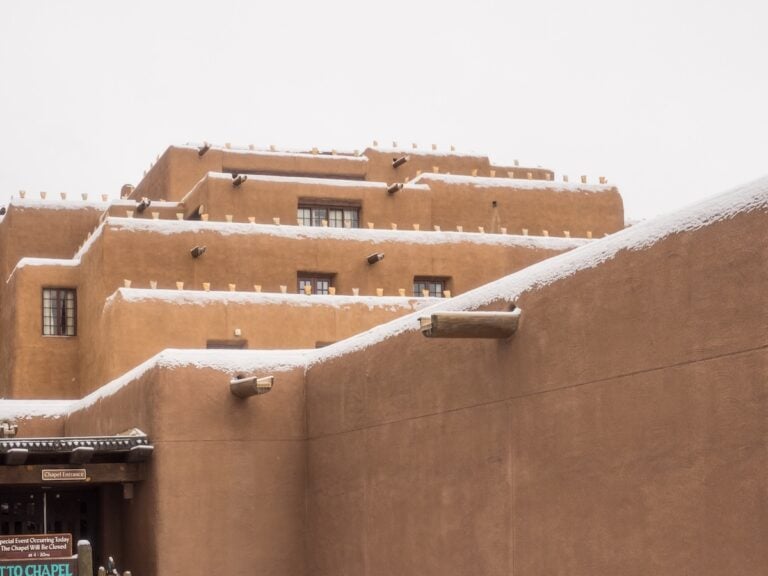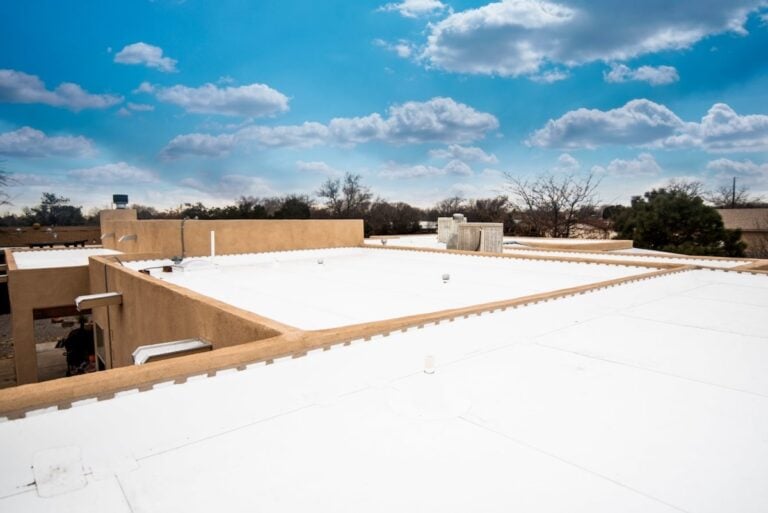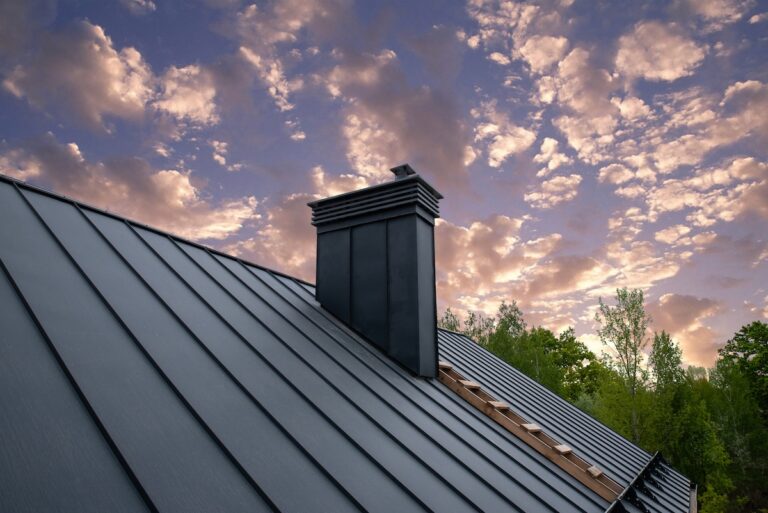What Is Roof Flashing? (Materials, Function, & More)
Your roof serves as your home’s first line of defense against the elements, and roof flashing is one of its hidden heroes. But what exactly is roof flashing, and why is it crucial for keeping your home protected from leaks and water damage?
This blog will break it all down, covering:
- What roof flashing is and how it works
- A detailed list of the benefits of roof flashing
- Types of roof flashing and their unique uses
What Is Roof Flashing?

Roof flashing is a thin, weather-resistant material (typically metal) installed around roof intersections, edges, and projections to direct water away from critical areas. Flashing acts as a sealant, protecting areas where the roof meets walls, chimneys, skylights, vents, or other structural elements. Without proper flashing, these areas become prone to water seepage, leading to leaks and costly damage.
Common Materials Used for Roof Flashing
When it comes to roof flashing, material choice matters. Durability, flexibility, and weather resistance are all key factors. The most widely used materials include:
- Metal Flashing: Aluminum is lightweight and rust-resistant, copper is durable and aesthetic but costly, while galvanized steel is strong and budget-friendly.
- Rubber or Plastic Flashing: Flexible and ideal for vent pipes, though less durable than metal.
- Roofing Membranes: Used as waterproof layers under shingles in high-moisture areas.
Ultimately, no matter the material you choose, the importance of proper flashing cannot be overstated. On residential roofs with their steeper slopes, flashing is a critical component that guides water away from vulnerable areas like chimneys and valleys. On commercial buildings, which are typically low-sloped or flat roofs, flashing is essential for preventing water from pooling around complex systems like HVAC units and vents. In both cases, this simple material is the first and most effective line of defense against the elements.
5 Key Benefits of Roof Flashing

Roof flashing may not be the most glamorous part of a roofing system, but its benefits are immense. Here’s why it’s indispensable:
1. Prevents Water Damage
Roof flashing is essential for channeling water away from the most vulnerable parts of your roof, such as valleys, vents, chimneys, and skylights. Without proper flashing, water can seep into your home, damaging interior structures like walls, ceilings, and insulation. Over time, even small leaks can lead to significant structural problems, costing you both time and money to repair. That’s why flashing and regular roof inspections act as your first line of defense, helping your home stay dry and protected during heavy rains or snow.
2. Prevents Mold and Mildew
Excess moisture in your home creates the perfect environment for mold and mildew to thrive, which can harm your indoor air quality and pose health risks to your family. Flashing helps prevent this by keeping moisture out of your home’s interior. By sealing potential entry points for water, it reduces the chances of mold and mildew forming and spreading, ensuring a healthier living space for you and your loved ones.
3. Improves Roof Longevity
Water infiltration is one of the leading causes of roof deterioration over time. Flashing serves as a protective barrier, preventing water from compromising the materials and structure of your roof. By reducing the risk of leaks and water damage, flashing helps extend the lifespan of your roof, allowing it to withstand the elements for many years. Investing in proper flashing can save you money in the long run by delaying the need for costly repairs or a full roof replacement.
4. Low Maintenance
High-quality flashing, when installed correctly, requires little to no maintenance. Unlike other parts of your roof that may need regular inspections or repairs, flashing remains effective with minimal upkeep. Periodic checks for damage or wear are usually sufficient to ensure it stays in good condition. This makes flashing a convenient and cost-effective solution for homeowners who want to protect their roofs without the hassle of constant maintenance.
5. Adds a Professional Finish
Beyond its functional benefits, flashing also enhances the overall appearance of your roof. Professionally installed flashing creates clean lines and a seamless look, giving your roof a polished, professional finish. This added aesthetic appeal not only ensures your roof looks great but also improves your home’s curb appeal. A properly flashed roof combines form and function, boosting both the look and performance of your home.
Types of Roof Flashing and Their Applications

Roof flashing comes in various types, each designed for specific roof areas. Here’s a closer look:
1. Step Flashing
Step flashing is used along walls that adjoin a sloped roof, ensuring water is directed away from potential gaps. This type of flashing is installed in small, overlapping pieces, with each piece integrated with a shingle to create a watertight barrier. The layering ensures that water flows down the roof and away from the wall without seeping into vulnerable areas. Step flashing is essential for preventing leaks in areas where the roof meets vertical structures, such as dormers or sidewalls.
2. Vent Pipe Flashing
Vent pipe flashing is designed to seal the gaps around pipes or other cylindrical projections that penetrate the roof. These pipes, often used for plumbing vents or exhaust systems, can create vulnerabilities if not properly sealed. Vent pipe flashing is typically made of rubber, metal, or a combination of both materials, providing flexibility and durability. The rubber portion forms a snug fit around the pipe, while the metal base secures the flashing to the roof, preventing water from entering through the gap.
3. Chimney Flashing
Chimney flashing is critical for creating a watertight seal around the chimney, which is one of the more complex roof features to protect. It involves multiple flashing types, including step flashing for the sides, counter flashing to cover the edges, and saddle flashing (or cricket flashing) at the back to divert water around the base of the chimney. Together, these components work to ensure that water doesn’t seep into the roof or chimney structure, preventing leaks and long-term damage to both the roof and the masonry.
4. Valley Flashing
Valley flashing is installed in the areas where two roof planes meet to form a valley, which is a natural pathway for water runoff. This type of flashing is crucial for directing water down the valley and preventing it from pooling or infiltrating the roof surface. Made from durable materials such as galvanized steel or aluminum, valley flashing is designed to withstand significant water flow and protect one of the most vulnerable parts of a roof. Proper installation ensures long-term durability and leak prevention.
5. Ridge Flashing
Ridge flashing is used along the roof ridges, where two sloped sections of a roof meet at the highest point. Its primary purpose is to seal the joint and prevent water, snow, or debris from entering the roof system through this vulnerable seam. Ridge flashing is often paired with ridge vents, allowing for proper ventilation while maintaining a watertight seal. By keeping the ridge protected, this type of flashing helps ensure the overall integrity of the roof and prevents potential structural damage caused by leaks..
Get Expert Help with Your Roof Today
At Cabezon Roofing, we understand the critical role roof flashing plays in protecting your home from water damage and ensuring the longevity of your roof. With years of experience, a team of skilled professionals, and a commitment to quality craftsmanship, we’ve earned the trust of homeowners across New Mexico.
Whether you need flashing repairs, a full inspection, or a brand-new installation, we’re here to provide reliable solutions tailored to your needs. Don’t wait until small issues turn into costly problems—contact Cabezon Roofing today for a free inspection! Schedule your consultation now.



